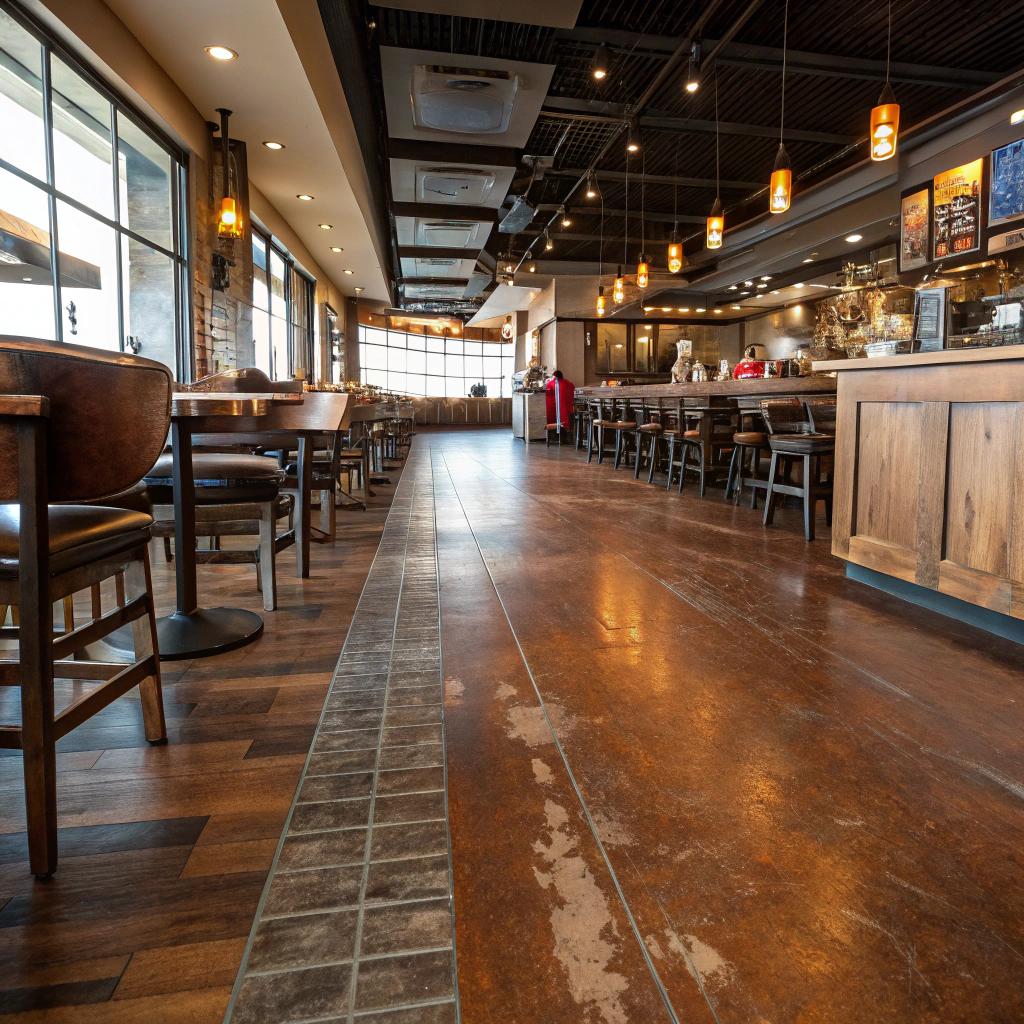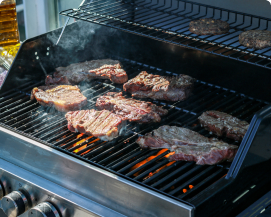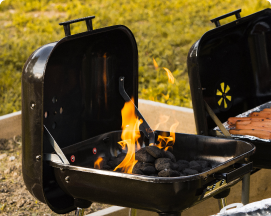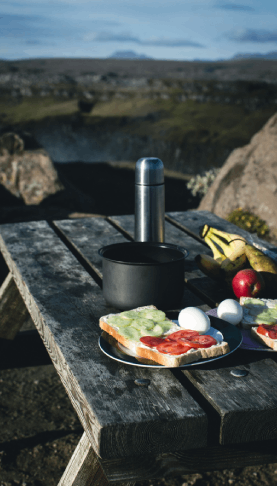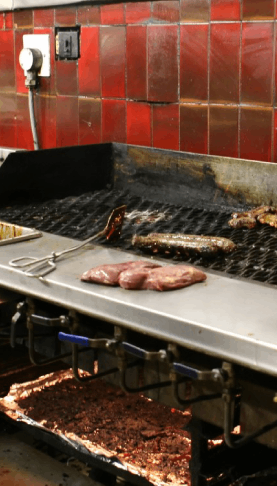If you walk into a restaurant with polished, glossy floors that are not slippery, do not smell like chemicals, and still look clean at the end of a Friday dinner rush, there is a fair chance those floors started with Lone Star Denver. They help restaurants turn bare or tired concrete into surfaces that can handle grease, dropped knives, constant mopping, and thousands of steps each week, while still looking good enough that guests actually notice.
That is the short answer.
The longer answer is more interesting, especially if you care about how a kitchen or dining room really works. Floors are not just background. They affect cleaning time, staff safety, noise levels, and even how your food photos look. I did not think about floors very much until I watched a friend open a small restaurant and saw how much trouble bad flooring caused. Since then, I pay attention.
So, how does Lone Star Denver change restaurant floors from “constant problem” to “quiet workhorse”? It is a mix of material choices, practical design, and some fairly unglamorous details that matter a lot in a kitchen.
Why restaurant floors are a bigger deal than most people think
If you cook at home, you already know that the floor near your stove sees more oil, crumbs, and water than any other part of the house. Now stretch that to a line with three or four burners, a fryer, dish station, and servers walking through with trays. Things get extreme pretty fast.
Restaurant floors have to manage several things at once:
- Constant foot traffic from staff and guests
- Hot oil, sauces, and liquids hitting the floor
- Frequent, often rushed cleaning with hot water and strong chemicals
- Heavy equipment sitting in one place for years
- Health inspections and slip resistance rules
Concrete by itself is strong, but raw concrete stains, dusts, and chips. Tile has grout lines that pick up grease and are hard to clean. Wood usually does not work well in commercial kitchens at all. That is where coatings like epoxy and decorative concrete systems come in.
Restaurant floors have to look inviting in the dining room, yet act like industrial flooring in the kitchen at the same time.
This balancing act is what Lone Star Denver works with every day. They supply products and guidance so that restaurant owners are not just guessing which coating might work.
What Lone Star Denver actually supplies to restaurants
Some people hear “decorative concrete” and think only of pretty patterns or colors. That is part of it, but not the main story for restaurants. In most cases, Lone Star Denver is helping owners and contractors pick systems that solve very practical problems: slipping, chipping, staining, and constant cleaning.
Their world mostly turns around a few core flooring systems.
1. Epoxy floors for back-of-house areas
When you walk into a kitchen with a shiny, slightly textured floor that looks poured in one piece, you are probably looking at an epoxy system. Epoxy flooring is common in restaurants because it can be:
- Non-porous and easy to sanitize
- Resistant to grease, oil, and sauces
- Textured for slip resistance
- Poured without grout lines
Lone Star Denver supplies the epoxy resins, pigments, quartz or flakes, and topcoats that go into these systems. The restaurant usually works with a local installer, and Lone Star helps that installer pick the right products for the kitchen or bar. This part is more boring than glossy photos, but it is where many projects succeed or fail.
The same epoxy that works well in a retail showroom can be a bad choice behind a fryer if it is too slick or too soft for hot oil.
For example, a line cook area near fryers needs more texture and higher heat resistance. A bakery area needs something that can handle sugar and flour dust, which can create a sort of fine sandpaper effect under shoes. A bar floor needs resistance to alcohol and constant moisture. These details change which epoxy blend, topcoat, and anti-slip additives Lone Star Denver will recommend.
2. Decorative concrete for dining rooms
The dining room has different needs. Guests see everything. They sit in one place, look around, and notice streaks, stains, or cracks. At the same time, servers walk constantly, chairs drag, kids drop food, and drinks spill.
Here, Lone Star Denver works more with decorative concrete systems such as:
- Polished concrete with densifiers and guards
- Stained or dyed concrete with clear topcoats
- Flake or quartz floors that mimic terrazzo
These systems are still tough, but they focus more on appearance. A restaurant might want a warm, slightly mottled stained concrete in earth tones. Another might prefer a light gray polished surface that reflects natural light and makes the food stand out more.
I once ate in a small place that had a pale blue tinted floor. At first I thought it was a bit odd, but it made the space feel cooler and cleaner, and the owners told me the color also hid minor dust between cleanings. That kind of small design choice can come out of working with someone who knows how pigments will look under restaurant lighting and constant wear.
3. Front-of-house and back-of-house transitions
One subtle detail where Lone Star Denver often helps is the transition between front and back. Many restaurants try to blend a polished, decorative floor in the dining room with a more functional, grippy floor in the kitchen.
If that transition is not planned, you might get a lip or uneven area that traps dirt or catches cart wheels. Or you end up with two colors that do not play well together.
A smart floor plan often uses one continuous concrete slab, with different coatings and textures that shift gradually instead of an awkward hard line.
Lone Star Denver can help contractors choose systems that bond well together so the whole floor behaves like one surface, even if the kitchen and dining areas look different.
How better floors change daily life in a restaurant
For people who cook or run restaurants, the question is simple: does this floor make life easier or harder every day?
From what I have seen and heard, a well planned Lone Star Denver floor affects several daily routines:
Faster and more reliable cleaning
Cleansing floors is one of those tasks that everyone does but nobody wants to think about. With the right coating, though, it stops being a daily headache.
A good restaurant floor:
- Does not absorb liquids, so spills sit on top instead of soaking in
- Lets staff mop or squeegee without fighting grout lines
- Resists stains from wine, sauces, and oils
- Does not peel or blister when hot water hits it
I remember watching a manager in a café check under tables after closing. On their old tile floor, dark grout always looked a bit dirty, even after long mopping. They switched to a coated concrete system with a light speckled texture. Suddenly, the same amount of work looked cleaner, and the staff actually finished earlier because there were fewer edges to scrub.
Fewer slips and falls
You might not think about slip resistance when you sit down to eat, but restaurant workers think about it a lot, especially near dish pits and cook lines.
Lone Star Denver helps installers adjust floor texture to match how the space is used. That can include:
- Adding grit or quartz to epoxy for more traction
- Choosing a finish with a slightly matte surface
- Changing texture levels between dry and wet zones
The trick is avoiding floors that are so rough that they trap dirt or catch on mop heads. There is a middle ground where the floor feels safe but still cleans well. It is not always perfect, and sometimes owners have to tweak the system between the first and second project, but having a supplier focused on this helps.
Less downtime for repairs
A big fear for many owners is shutting down for floor replacement. Every quiet day hurts. Lone Star Denver cannot remove that problem entirely, but they do offer systems with different cure times and schedules.
For example, some coatings allow:
- Night or two-day installations
- Staged work, with half the kitchen done at a time
- Fast-curing topcoats that handle foot traffic more quickly
There are tradeoffs, obviously. Faster curing can mean stronger odors during installation. Longer cure times can give better long-term performance. Owners have to choose what matters most at that moment. Having clear product data and someone who can explain it in simple terms helps them make that call.
Comparing different restaurant floor options
If you are the type of person who likes to line up choices and think about them, this basic comparison might help. It is simplified, but it gives a sense of how concrete-based systems from Lone Star Denver fit against more traditional surfaces.
| Floor type | Main use in restaurants | Strengths | Common problems |
|---|---|---|---|
| Raw concrete | Back storage, low traffic areas | Cheap, strong, easy to pour | Dust, stains, surface wear, hard to sanitize |
| Ceramic / porcelain tile | Bathrooms, some kitchens, entries | Good water resistance, many styles | Grout lines collect dirt, tiles crack, can be slick |
| Vinyl sheet / LVT | Dining rooms, some bars | Softer underfoot, many looks | Seams lift, cuts from furniture, damage from heat |
| Epoxy / coated concrete | Kitchens, bars, dish pits | Non-porous, customizable texture, bonded to slab | Needs proper prep, can yellow in strong UV without topcoat |
| Polished / stained concrete | Dining rooms, open kitchens | Durable, smooth, modern look, no grout | Reflectivity and color must be planned, may need periodic re-guarding |
Lone Star Denver works mostly in that last row and the epoxy row, helping owners lean on the strengths of concrete while minimizing its weaknesses.
How Lone Star Denver supports contractors and owners
One thing that can be a bit confusing is that Lone Star Denver is not a restaurant design studio or a construction company. They supply materials and knowledge. That might sound dry at first, but it actually matters a lot for the final floor.
Here is how that usually plays out in practice.
Helping choose systems for each room
A typical restaurant project may include several different zones:
- Main kitchen
- Prep area
- Dish pit
- Walk-in cooler entry
- Bar
- Dining room
- Restrooms
If you put the exact same flooring everywhere, one of those spaces will not be ideal. A dish pit with standing water, for example, needs more texture and chemical resistance than a dry hallway that servers use for running food.
Lone Star Denver helps installers map these zones and match each zone to a system that fits. That might mean three or four different coating combinations across the restaurant, all tuned to the same base concrete slab.
Training installers on products
Epoxy, stains, and sealers are sensitive to conditions. Temperature, humidity, and surface moisture can change how they cure. That is where product knowledge matters.
Lone Star Denver spends a good amount of time on training: explaining proper grinding and surface prep, mixing ratios, cure times, and so on. This reduces problems like peeling, early yellowing, or soft spots.
Some restaurant owners may not see this side directly, but they feel it later, when their floor holds up better than the cheap coating in the strip mall next door.
Color, flake, and design guidance
This part is more visual and might interest you if you care about how a space feels while you eat.
Colors on the floor influence how bright or dim a room feels, how much dirt you see, and even how the food looks in photos. For example:
- Very dark floors can hide stains but make spaces feel smaller
- Very light floors show dirt more quickly but reflect more light
- Speckled flake systems break up small debris visually
- Warm tones can make a room feel more relaxed
Lone Star Denver carries pigments, flakes, and stains in many colors, but the real value is talking through which ones make sense for a specific restaurant style. A white tablecloth steakhouse likely wants different flooring than a casual taco shop, even if both pick coated concrete.
Concrete floors and food: how they affect the guest experience
This is a cooking and restaurant focused site, so it makes sense to pause for a moment on how floors connect to food, not just safety and cleaning.
Noise levels and acoustics
Concrete floors reflect sound. So do bare walls and large windows. Put all that together and you can end up with a very loud dining room. That might fit some energetic places, but not every concept.
With Lone Star Denver style systems, there are some ways to influence acoustics, even if you still end up with a hard floor:
- Use area rugs in waiting areas or near entrances to catch some sound
- Choose furniture and soft seating that absorb more noise
- Add wall panels or acoustic ceilings that balance the hard floor
The floor itself will still be hard, which is usually necessary for cleaning, but the rest of the design can soften the overall sound. Good owners think about this while picking floor colors and finishes, not after the echo shows up.
Light reflection and plate presentation
This might sound a bit nerdy, but flooring affects how light bounces up onto food. A high-gloss pale floor reflects more light into the room. Dishes might appear brighter. A darker, more satin finish floor will absorb more light, which can make candles and focused lighting stand out.
When Lone Star Denver helps select topcoats, they often talk about gloss levels. Restaurant owners can match that to their lighting design so the floor supports the mood without creating glare under overhead fixtures.
Clean feel, even between mops
As a guest, you probably recognize this: some restaurants feel clean even when they are busy, while others feel sticky or dusty, even if the food tastes fine. Floor surfaces are a big part of that perception.
Non-porous decorative concrete and epoxy systems help here because they:
- Do not have deep joints that trap grime
- Hold less residue from cleaning chemicals
- Can be wiped or spot cleaned quickly between services
This is not magic care still matters. If a restaurant ignores cleaning, any floor will get gross. But it is a bit like cooking on a good nonstick pan instead of a warped old one. The work becomes easier and more reliable.
Planning a flooring project without losing your mind
If you are thinking about a new restaurant, or renovating an existing one, flooring can feel like one more thing on a crowded list. It can be tempting to just “pick something fast” and move on. That is not always wise.
Lone Star Denver cannot plan the whole project for you, but you can use a simple thought process when talking with your contractor or designer.
Key questions to ask about the floor
Before you settle on any system, it helps to get clear on some practical points:
- What kind of food and service will you run? Fast casual, fine dining, bar focused?
- Where will the messiest work happen? Fryers, dish area, raw prep, bar?
- How often will you deep clean, realistically, not ideally?
- Do you want guests to see the kitchen or only the dining room?
- Do you expect heavy rolling carts or just server traffic?
- Is there existing flooring that has to stay in some areas?
Answers to these shape the right mix of coatings, textures, and finishes. If you share this with your installer, they can work with Lone Star Denver to zero in on systems that make sense for your space.
Common mistakes with restaurant floors
I have seen or heard of a few recurring problems when owners skip this kind of planning. You might avoid them by being a bit stubborn and asking more questions.
- Choosing flooring only for looks, then discovering it is slippery when wet
- Using the same finish in the bar and the dish pit, even though spill patterns are very different
- Skipping proper surface prep to save money, which often leads to peeling later
- Ignoring how hot equipment will affect coatings near fryers or ovens
- Not planning for future repairs or new equipment placement
You are not wrong to care about things like wall colors and plate styles more than floor specs. Those are more fun. But ignoring the floor can cost you more time and money later than picking the wrong napkin color.
A look behind the scenes: how a floor project might actually go
To make this more concrete, it might help to picture a simple timeline. Imagine a mid-size restaurant doing a renovation with Lone Star Denver supplied products:
- The owner decides the old tile is too slippery and too hard to clean.
- They talk with a flooring contractor who suggests concrete coatings instead.
- The contractor talks with Lone Star Denver about the space, traffic, and budget.
- They select:
- A textured epoxy system for the kitchen and dish pit
- A polished stained concrete with a clear guard for the dining room
- A slightly different non-slip system for bathrooms
- The old tile is removed and the concrete slab is inspected and repaired.
- The floor is ground to open the surface and remove old residue.
- Coatings are installed in stages to keep some access to storage and back rooms.
- After proper curing, the staff walks the floor, checks traction, and adjusts cleaning routines.
This is not glamorous, and there are often small snags. Maybe the slab has more cracks than expected. Maybe color samples look different under real lighting. The point is that a supplier like Lone Star Denver is part of that back-and-forth, helping adjust the plan instead of leaving the installer alone to guess.
How this all connects to your own cooking or restaurant visits
If you are mostly here for recipes and restaurant stories, you might wonder why you should care about floor coatings in Denver. I think there are at least two reasons.
First, if you ever dream of opening a café or small restaurant, understanding the boring parts gives you an advantage. You can ask better questions, push back gently on weak proposals, and set up your space so you are not fighting stains and slick spots every night.
Second, as a guest, you can start to notice the details that make a place feel well run. When you walk into a dining room with a calm, clean feel and staff moving confidently on a solid floor, you are seeing the outcome of choices like these. That adds up to better service and, often, better food, even if you do not link it directly.
I still think about that pale blue café floor sometimes. The owners told me that switching from cracked tile to a coated system reduced nightly cleaning by almost an hour. That extra hour went into prepping better pastries for the next morning. In a small way, a better floor turned into better food.
Questions people often ask about Lone Star Denver and restaurant floors
Is decorative concrete only for modern or industrial style restaurants?
No. Decorative concrete can fit many styles. Color, finish, and texture control a lot of the look. A polished gray floor with clean lines feels modern. A warm brown stained floor with a satin finish can feel more rustic or traditional. Lone Star Denver supplies a range of pigments, flakes, and stains that designers can combine with fixtures, wood, and fabrics to match many concepts.
Do concrete and epoxy floors feel too hard to stand on all day?
They are firm, yes, but kitchen workers are usually on cushioned mats in front of the line and dish area, no matter what the floor is. Compared to tile, concrete coatings tend to have fewer sharp edges and breakpoints, which can feel slightly more consistent underfoot. Some owners also choose shoes with better cushioning to balance the hard surface.
Are these floors very slippery when wet?
They do not have to be. Slip resistance depends on the texture and additives in the top layer. In kitchens and dish areas, Lone Star Denver systems often include anti-slip aggregates or quartz that add grip, even when some water or oil hits the floor. In dining rooms, the texture usually stays smoother, but it can still be tuned to avoid that ice rink feeling.
Can decorative concrete work in cold places or near entry doors?
Yes, but the slab and coatings need to be chosen with temperature swings in mind. In cold climates, salt and meltwater can attack weak surfaces near doors. Good surface prep, solid primers, and the right topcoats help protect against that. Entrances often use a combination of floor mats plus a durable coated surface for that reason.
How long do these floors last before they need work again?
It varies. A hard working kitchen might need a new topcoat or some repairs after several years of heavy use, while a dining room with lighter traffic can go longer with only cleaning and occasional touch ups. The advantage of decorative concrete and epoxy systems is that the base slab usually stays in place. Most maintenance focuses on the top layer, not ripping everything out.
If I am just a home cook, can I learn anything useful from this?
I think so. Even if you never install a commercial-grade floor, you can take the idea that surfaces should match how you actually cook. Picking a backsplash that wipes clean, a countertop that handles hot pans, or a kitchen mat that adds grip are all small versions of the same thinking that Lone Star Denver applies to restaurant floors. The goal is simple: less fighting with surfaces, more focus on good food.


